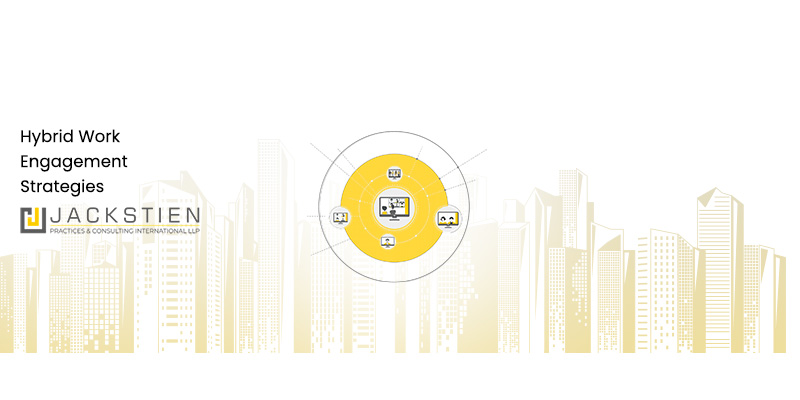Background
Over the last few years, we’ve witnessed monumental changes in the world of work and the future of work is undoubtedly one that’s inching towards flexibility and increased work-life balance.
But this shift to remote or hybrid work doesn’t come without its challenges and more often than not, it can be an arduous process to navigate and successfully integrate into organizational systems and processes.
In this article, we’ll explore how companies can transition to Hybrid Work by applying the principles of Systems Thinking to their organizational transformation efforts.
Conventionally, the approach used to tackle large scale change has been ‘divide and conquer’. Essentially, scoping out the work, breaking it down into chunks, assigning each unit with responsibilities within their remit and hoping for the best. While this is standard practice, it quite often brings with it a host of challenges and siloed efforts that fail to translate into meaningful outcomes. This is where Systems Thinking comes into play and could be beneficial in understanding the complexities of organizational transformation.
What is Systems Thinking?
Systems thinking is a methodology that involves analyzing and understanding complex systems as a whole, rather than as individual parts. It maintains the view that in order to optimize the whole, we must improve relationships among parts.
It considers how different parts of a system interact with each other, and how changes to one part of the system can affect the whole.
In the modern workplace, Systems Thinking can be used to solve complex problems and optimize processes. By applying systems thinking, organizations can identify patterns, relationships and feedback loops that may be hindering productivity or efficiency and develop strategies to address them.
Applying Systems Thinking to Hybrid Work Models.
Surveys conducted by leading experts found that organizations that figured out how to apply a Systems Thinking approach to hybrid work models were more likely to report positive outcomes for both employees and the organization. A survey found that organizations that implemented systems thinking strategies were better able to maintain team cohesion, manage workloads, and balance work-life.
Systems Thinking for successful change management requires a common agenda (shared language, understanding of goal, shared theory of change), shared measurement systems, mutually reinforcing activities (build trust knowing where one can support the other) and continuous communication. According to a study by Slack, organizations that successfully transitioned to remote work during the pandemic used a combination of technology and culture to support their employees.
By applying Systems Thinking, organizations can ensure that their communication channels are integrated with their technology systems and overall strategy to support hybrid work models.
They can also consider how changes to communication channels can affect other parts of the system, such as employee morale and productivity.
Here’s one example of how systems thinking can be used to solve organizational issues arising from the transition to hybrid work.
…the Problem
A mid-sized software company has decided to adopt a hybrid work model, allowing employees to work both remotely and in the office. However, the transition has not gone smoothly, with several issues cropping up, including decreased productivity, remote employees getting passed over for promotions, communication breakdowns, and employee burnout.
One way to apply systems thinking to this problem is to conduct a stakeholder analysis to identify all the parties and processes and stakeholders who are affected by the transition to hybrid work. This might include employees, managers, IT support staff, vendors and customers.
This is followed by an assessment and balancing of the risks through a systems analysis to identify the various components of the system and how they interact with each other. It is, eventually, pointless to attribute the cause of any problem to one specific area of the business or considering solutions for specific areas without understanding how different pieces fit together in the larger context.
Risk managing hybrid work problems requires one to question whether the problems in question are indeed related to hybrid work or did they always exist, with hybrid work just proved to be the easy but wrong culprit. This is critical in systems thinking because wrong diagnosis and wrong solutions in one part impact many others .
Overall, recent research has emphasized the importance of Systems Thinking in helping organizations optimize processes, solve complex problems, promote innovation, improve employee engagement and satisfaction, and navigate the challenges of the future of work. To effectively transition to hybrid work models, organizations can apply Systems Thinking methodologies to understand how different parts of the system interact with each other, and how changes to these parts can affect the overall success of the hybrid work model.
"Jackstien Practices has pioneered systems thinking for transitioning to and risk managing Hybrid Work. With expert coverage across four independent and complementary fields (Technical, Financial, Technological & Behavioral), Jackstien Practices elevates the concept of 'systems thinking' to the field of Hybrid Work."

